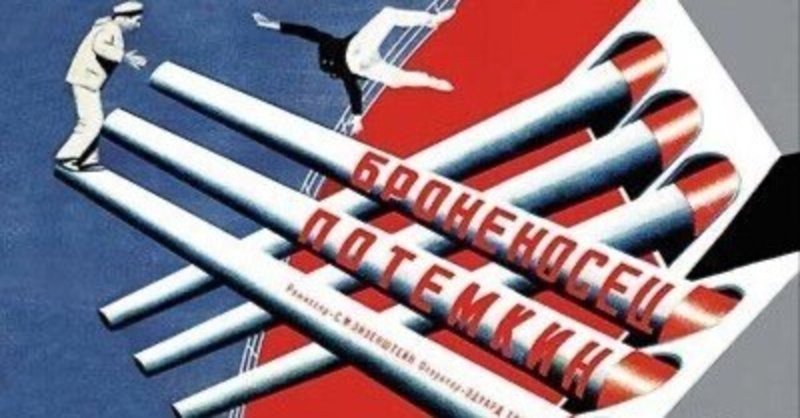
The Soviet films and the montage of attractions
Today, I'm going to refer to the Soviet films and the montage, especially the montage of attractions. In the last semester, I restudied about the montage in the class which focused on the film studies, and I turned in a term paper about the montage of attractions. This subject is extremely abstrused and complicated, so I had no confidence in my paper. However, I got the best grade on that, therefore, I'm going to describe that re-edited term paper.
It's almost impossible to point out the existence of the film which isn't influenced by the theory of montage. In the first place, the definition of the theory of montage is a kind of film theory which was proposed in the Soviet Union, and the name: "montage" comes from "monter" which means composing in french. It is relevant to the experimental outcomes cineasts in the Soviet Union did, like Sergei Eisenstein.
In a broad sense, we can define every film as a montaged film, however, there is a specific subject of the montage called "Kuleshov effect" which is based on the experiment led by Lev Kuleshov, 1922. "Kuleshov effect" proved that depending on the shot combination, it is changeable the way to interpret, even if they are exactly the same shots.
We can mention an example. It is "Rear Window'' directed by Alfred Hitchcock in 1954.The scene of the neighbourhood follows close-up of James Stewar's face, and the close-up of James Stewar's face follows the scene of the neighbourhood. In this sequence, we can find out a variety of expressions from his face. In this way, interpretation or meaning will be different and it is totally far from the dimension of acting.
Meanwhile, it's difficult for a person not familiar with films to mention a Soviet film, nonetheless, the achievement of Soviet film is stunning. In the Soviet Union under Vladimir Lenin, the film industry was nationalised, and the first film school in the world was established. The aim of establishing this school was not to monopolise knowledge or experience of film as one's possession or capital but socialisation of knowledge about film.
This is recognised that "cinema verite" is a kind of filming in France, however, actually this name comes from "Kino-Pravda" directed by Dziga Vertov from the Soviet Union, and it is also used by Jean-Luc Godard when he organised his political film organisation named "the Dziga Vetrov group."
Innovativeness of the Soviet film influenced so much across the film industry, and we can't help but be amazed at the achievement of Sergei Eisenstein. His masterpiece "Battleship Potemkin '' (1925) is well known across the world even though he directed only seven films in his entire life. Instead of directing films, he spent much time on writing theses, and there is a famous manifest "The montage of attractions." The word of "attractions'' has two meanings, one is "outdoor playset" and the other is "performance that interstes an audience." They thought if they put them together, it might shock people like a roller coaster.
From the film composed of the montages the audience create images which were passed through the audience's identity or position in the society. There is a certain direction by the filmmaker, but there is a possibility that the image of the film created by the audience will be different from the intention of the filmmaker.
If we think about this, we realise the fact that the film is a kind of creation which the audience made. A kind of creation called "the film" allows us to imagine, and asks us to make a decision about what this film is.
Nowadays, we can easily watch films thanks to the video streaming services, however, we shouldn't forget the responsibility for the films which the cineasts from the Soviet Union asked us to create.
Thank you for reading<3
この記事が気に入ったらサポートをしてみませんか?
